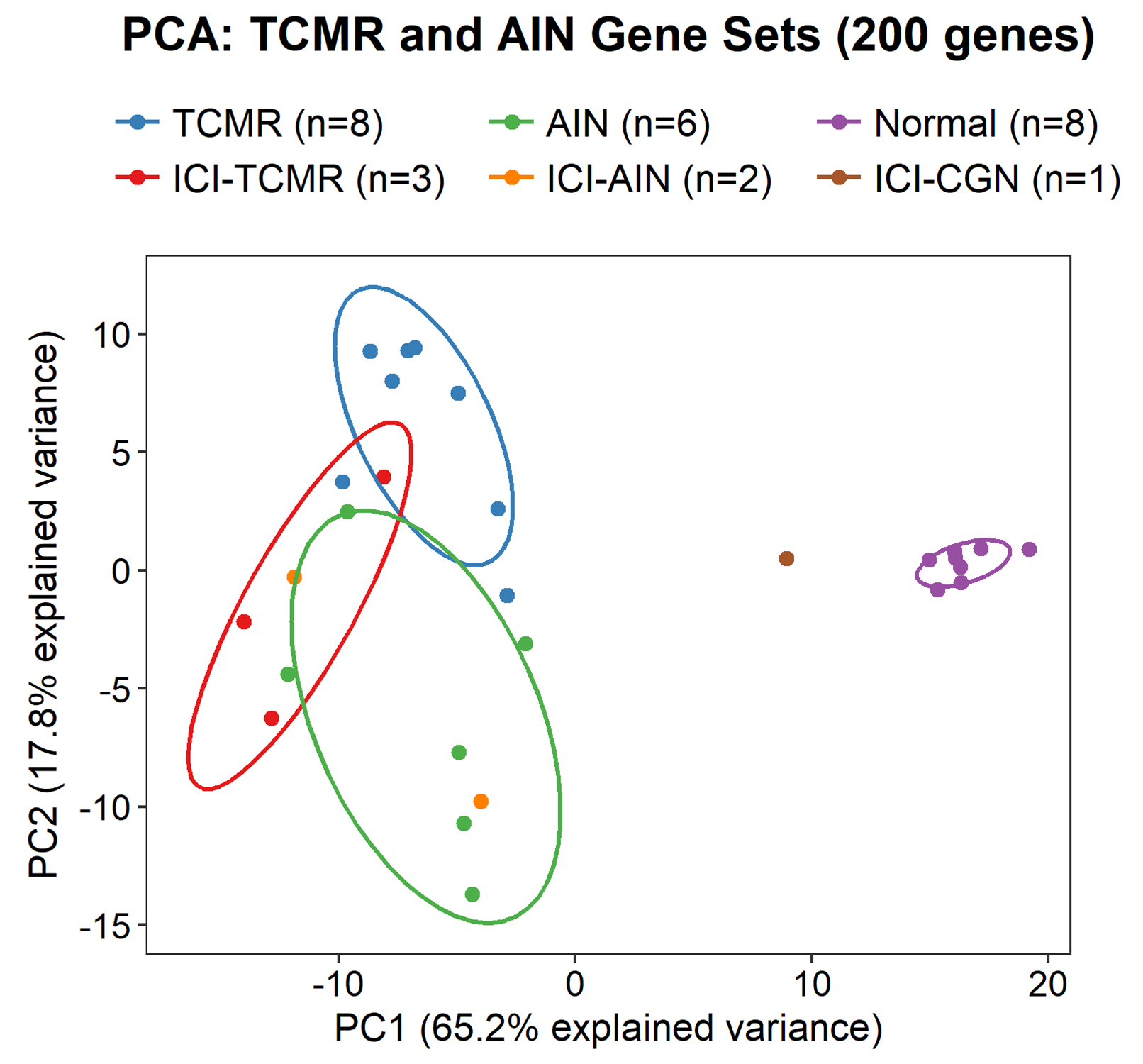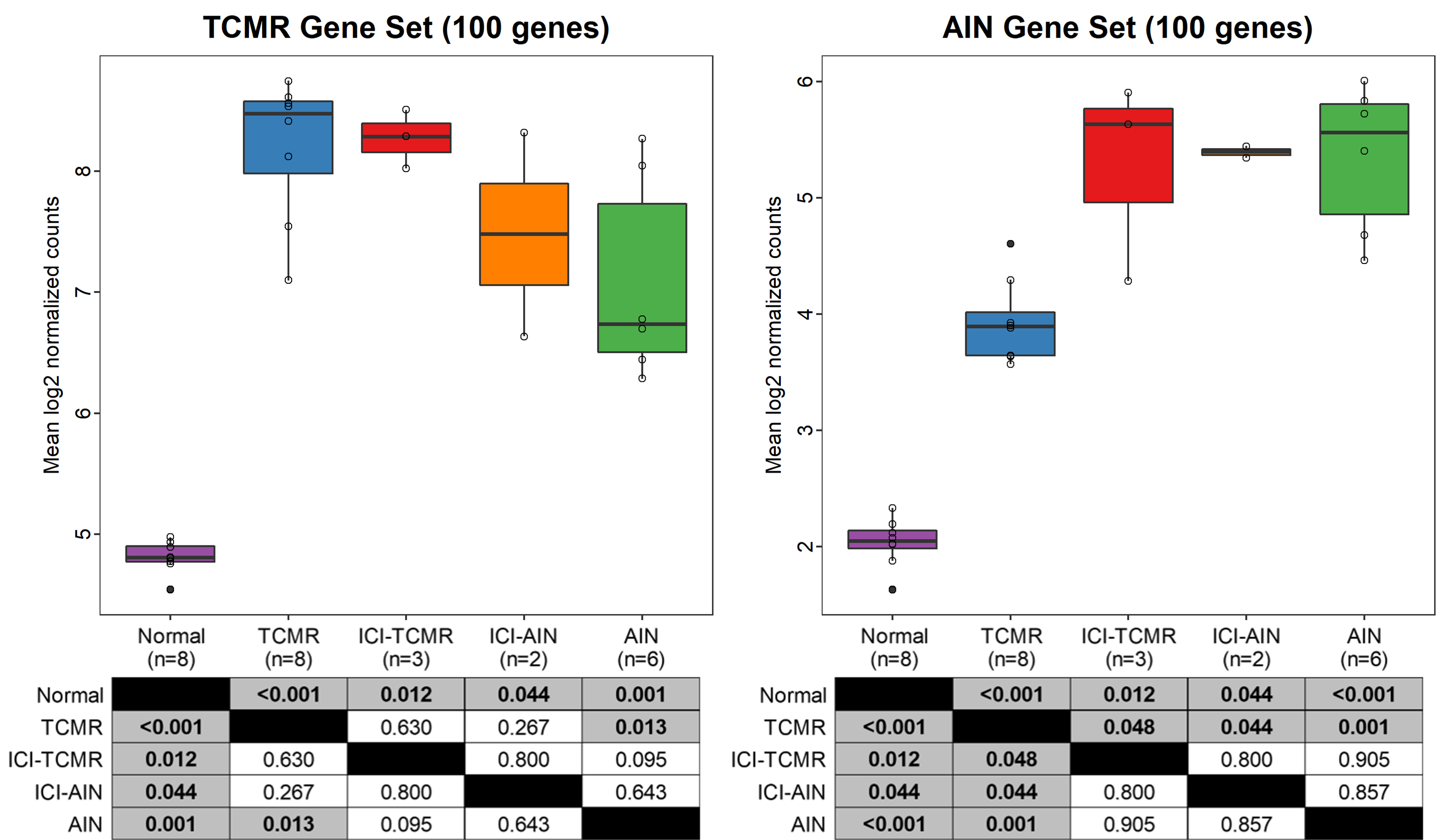The Molecular Pathology of Immune Checkpoint Inhibitor-Associated Renal Allograft Rejection: Overlap with Acute Interstitial Nephritis
1University of Alberta, Edmonton, AB, Canada, 2Arkana Labs, Little Rock, AR, 3University of Minnesota, Minneapolis, MN, 4CHU Nantes, Nantes, France
Meeting: 2019 American Transplant Congress
Abstract number: C151
Keywords: Gene expression, Kidney transplantation, Rejection
Session Information
Session Name: Poster Session C: Kidney: Acute Cellular Rejection
Session Type: Poster Session
Date: Monday, June 3, 2019
Session Time: 6:00pm-7:00pm
 Presentation Time: 6:00pm-7:00pm
Presentation Time: 6:00pm-7:00pm
Location: Hall C & D
*Purpose: The use of immune checkpoint inhibitors (ICIs) for various malignancies has been associated with numerous immunological adverse events, including acute interstitial nephritis (AIN) in native kidneys and acute T-cell mediated rejection (TCMR) in transplant kidneys. The goal of this study was to further characterize these adverse events through comparative molecular analysis.
*Methods: NanoString was used to measure the expression of 800 genes in 28 archival kidney biopsies. The genes included a commercial 770-gene immune profiling panel plus 30 additional TCMR-related genes. The samples included native kidney biopsies with ICI-related AIN (ICI-AIN, n=2), ICI-related crescentic glomerulonephritis (ICI-CGN, n=1) and non-ICI-related AIN (AIN, n=6); transplant kidney biopsies with ICI-related TCMR (ICI-TCMR, n=3) and non-ICI-related TCMR (TCMR, n=8); and normal implantation biopsies (Normal, n=8). Molecular results were then compared between groups.
*Results: 309 genes were significantly upregulated in TCMR vs. Normal and AIN, and 235 genes were upregulated in AIN vs. Normal and TCMR (FDR<0.05); the top 100 of each were combined into aggregate TCMR and AIN gene sets, respectively. Principal component analysis demonstrated distinct clustering of Normal, AIN and TCMR biopsies based on gene expression. ICI-AIN overlapped with AIN, while ICI-TCMR overlapped with AIN and TCMR (Figure 1). TCMR gene set expression was higher in TCMR than AIN (p=0.013) but there was no significant difference between ICI-TCMR and ICI-AIN, and no difference between the ICI groups and TCMR or AIN (Figure 2). AIN gene set expression was higher than TCMR in AIN, ICI-AIN and ICI-TCMR (p<0.048) but there was no significant difference between these three groups.
*Conclusions: These results suggest that ICI-AIN and ICI-TCMR both have molecular phenotypes closer to AIN than TCMR. In ICI-TCMR, this may reflect non-specific activation of the immune system compared with a more specific alloimmune response in TCMR. These findings may facilitate improved understanding and management of these adverse events.
To cite this abstract in AMA style:
Adam B, Boils C, Bu L, Renaudin K, Wen K, Mengel M. The Molecular Pathology of Immune Checkpoint Inhibitor-Associated Renal Allograft Rejection: Overlap with Acute Interstitial Nephritis [abstract]. Am J Transplant. 2019; 19 (suppl 3). https://atcmeetingabstracts.com/abstract/the-molecular-pathology-of-immune-checkpoint-inhibitor-associated-renal-allograft-rejection-overlap-with-acute-interstitial-nephritis/. Accessed December 27, 2025.« Back to 2019 American Transplant Congress


